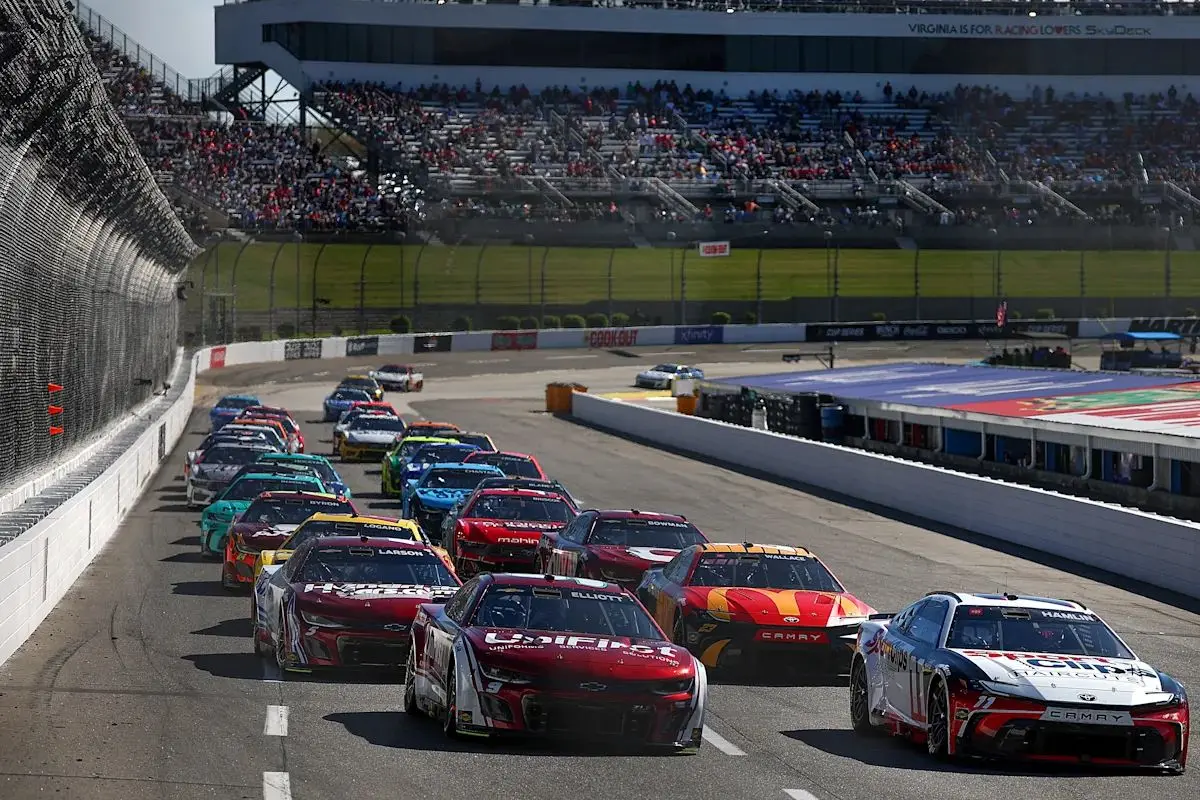The shift to the Next Gen car has reshaped NASCAR’s competitive balance, and the numbers now show how much has changed. Since 2022, the sport has seen fewer dominant runs at the front of the field, with top drivers posting higher average finishes than in past years. Fans are split on whether parity is good for the sport or a sign that new rules have hurt on-track consistency, sparking heated debates across the NASCAR community.
Key Highlights
-
Average finishing positions for top drivers have worsened since the debut of the Next Gen car.
-
Denny Hamlin leads all full-time drivers since 2017 with a 10.2 career average finish.
-
Joey Logano and Kyle Busch follow with 12.3 averages each over the same span.
-
Chase Elliott likely missed a top-three spot due to his 2023 injury absence.
-
Fans blame parity, DNFs, and the Damaged Vehicle Policy for preventing dominant streaks.
Chase Elliott’s Absence Draws Attention to Changing Numbers
When the new finishing data came out, fans expected Chase Elliott to be near the top alongside other elite drivers. His absence from the top three surprised many, prompting speculation about how much his injury-shortened 2023 season hurt his numbers. Elliott missed seven races that year, eliminating opportunities for several top-15 finishes that could have improved his long-term average.
“I’m somewhat surprised Chase Elliott doesn’t make the top 3 best finishing positions.” – Fan reaction
“Missing a bunch of races in 2023 probably brought down that average.” – Fan reaction
“But those bad finishes have more weight. He missed 7 races. Odds are that’s 5 top 15s he missed out on.” – Fan reaction
Fans believe that without the lost races, Elliott’s consistency would have been closer to Hamlin’s mark of 10.2. The missed results highlight how even a short absence can significantly skew averages in the modern NASCAR era, where competition is tighter and every finish carries more weight.
![]()
Kyle Larson’s Aggression Raises Debate
Kyle Larson’s style has long been described as “checkers or wreckers,” going all-in for wins regardless of risk. Despite this, his career average finish since 2017 sits among the sport’s best at 10.8, surprising some fans who expected the risks to drag his numbers lower.
“10.8 seems kinda high for Larson with his wreckers or checkers mentality he seems to have.” – Fan reaction
Larson’s approach produces plenty of victories but also leaves him vulnerable to DNFs, which weigh heavily under current rules. The Damaged Vehicle Policy prevents teams from making extensive mid-race repairs, meaning even minor wrecks often end races prematurely. In the Gen 6 era, Larson and others might have salvaged top-15 results after incidents. Today, those same moments can lead to finishes outside the top 30, inflating average finish numbers over time.
The Next Gen Era and Parity’s Impact
Many fans view the shift in average finishes as part of NASCAR’s broader changes since 2022. The Next Gen car was built to level the playing field by standardizing parts and cutting costs, but it has also made dominance far more difficult. Sub-10 averages, once common for elite drivers in the Gen 6 era, have all but disappeared.
“I remember looking at numbers like this several years ago, and from what I recall, the Gen 6 was the slight anomaly.” – Fan reaction
“One thing’s for sure, something definitely changed in 2022 and it stopped drivers from getting sub-10 average finishes.” – Fan reaction
“Plays a role. There’s more DNFs.” – Fan reaction
Closer racing, fewer performance gaps between teams, and stricter repair limits combine to create higher finishing averages across the board. Even Denny Hamlin’s 10.2 mark since 2017, the best among full-time drivers, reflects how challenging it has become to avoid bad days in the modern Cup Series.
The trend has altered perceptions of driver dominance. In past eras, top drivers routinely strung together long streaks of top-five finishes, separating themselves from mid-pack competitors. Under Next Gen rules, random incidents, increased DNFs, and fewer car advantages make such consistency rare.

Parity Debate Splits the Fanbase
The data has fueled a broader conversation about NASCAR’s direction. Some fans celebrate parity, enjoying that more teams and drivers have a realistic chance to win each week. Others believe the sport has sacrificed the ability to showcase elite drivers delivering dominant seasons.
Frustrations extend beyond finishing averages. Complaints about low horsepower, high-grip tires, and limited passing opportunities have persisted since the Next Gen debut. Many argue these factors, combined with DNFs from minor contact, have diluted season-long excellence. While Hamlin stands alone at the top statistically, fans are questioning whether anyone can reach the sub-10 averages seen in past decades.
The debate reflects NASCAR’s ongoing challenge: balancing competition and unpredictability with showcasing the sport’s best talent. While the data highlights how much the sport has changed, it has also deepened fan discussions about what true dominance looks like in today’s Cup Series.

News in Brief: NASCAR Fans React to New Era Finishing Trends
NASCAR’s shift to the Next Gen car has tightened competition but made dominant average finishes a thing of the past. Denny Hamlin leads all full-time drivers since 2017 with a 10.2 career average finish, followed by Joey Logano and Kyle Busch at 12.3 each. Chase Elliott’s 2023 injury absence likely cost him a spot in the top three. Fans cite increased DNFs, the Damaged Vehicle Policy, and tighter parity as reasons why sub-10 averages have disappeared.
ALSO READ: NASCAR Fans React to Recent Changes in Charlotte Roval Dynamic
